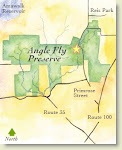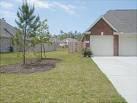
Did you ever think about where those cute little puppies at the pet store come from?
Most of us know that Pet Store Pups come from puppy mills. Puppy Mills are large scale breeding operations where profits are given priority over the health and well being of the breeding dogs or their puppies. Unlike responsible breeders, puppy mills give little if any consideration to the genetic background of the dogs being bred. This leads to generations of dogs with unchecked hereditary problems.
Puppy mill pups are usually sold to the pet stores through a broker or middleman. The pups are put up for sale as young as 8 weeks of age. These dogs do not benefit from play time, treats or any of the conventions used to produce a good healthy pet.
Illness, fearful behavior, disease and lack of socialization are but a few of the common problems that are associated with puppy mill pups. Puppy mill operators generally fail to apply proper husbandry techniques that would remove sick dogs from the breeding pool and that is why puppy mill pups carry congenital diseases such as epilepsy, heart and kidney disease to mention but a few.
Puppy mills house the dogs in overcrowded and unsanitary conditions, without adequate care, socialization or medical treatment. No toys or opportunities for exercise are provided. In order to minimize cleanup, dogs are kept in wire bottom cages that often cause injury to paws and legs. These cages are stacked up in rows and many breeder dogs spend their entire lives in the same cage outdoors.
In order to maximize profits, female dogs are bred continuously with little or no time to recover from a prior litter. After a few years, when female dogs can no longer produce, they are often killed. The mom and dad of that cute little puppy in the pet store window most likely will never leave the mill alive.
Puppy mills began to sprout up all over the country after World War II. The United States Department of Agriculture, in response to widespread crop failures, touted purebred puppies as a no-fail cash crop. This of course appealed to farmers facing hard times and chicken coops and rabbit hutches were repurposed for dogs and the retail pet industry. Today, Missouri is known to be the largest puppy mill state in the country. Puppy brokers (middlemen) who deliver the pups from the mill to the pet store provided seminars to teach farmers how to operate a breeding facility. In the 1970's Amish farmers embraced puppy mills as the cash crop of the future. Today, Lancas ter Pennsylvania is dubiously known as the Puppy Mill Capital of the East!
ter Pennsylvania is dubiously known as the Puppy Mill Capital of the East!
 ter Pennsylvania is dubiously known as the Puppy Mill Capital of the East!
ter Pennsylvania is dubiously known as the Puppy Mill Capital of the East!What can you do to help fight the puppy mills?
You should refuse to patronize any of the pet stores and web sites that promote these dogs. In fact, do not buy a dog from anywhere that does not allow you to see the entire facility and meet the mother dog. Remember that anyone can build a good looking web site that promotes the highest breeding standards, but the fact is that any responsible breeder will want to meet you to make sure that their prize pups are going to a good home.
Owning a dog can be one of the most beneficial relationships a person can have. A dog becomes a member of the family and gives back more love than it will ever receive. Why start off on the wrong foot by purchasing (at top dollar) a dog that may not have had good breeding and upbringing before he is placed in your care. Do your research and find a good responsible breeder, you will not be sorry that you did.




















